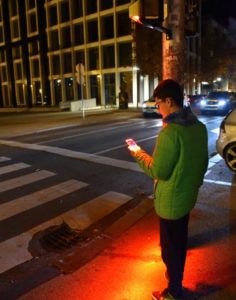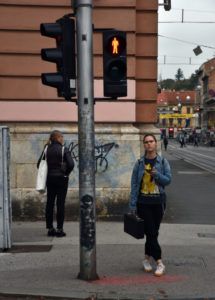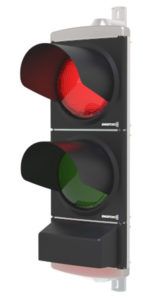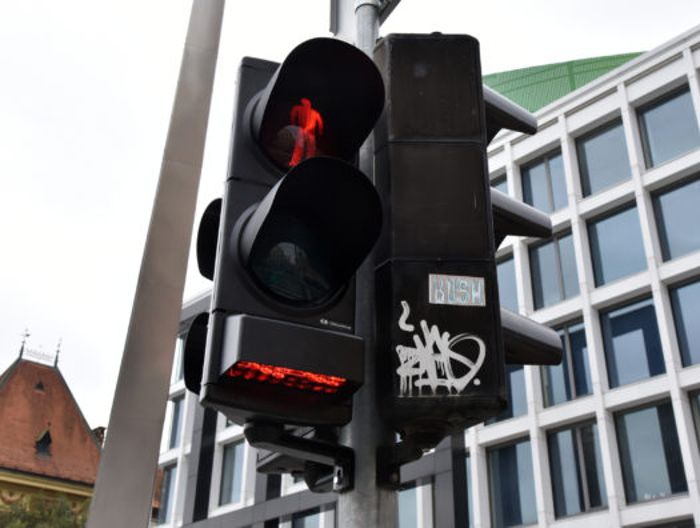A new type of traffic signal has been installed in the Croatian capital, Zagreb, which sheds light on the sidewalk next to a pedestrian crossing, so that people approaching the intersection can see a red warning, even if they are engrossed in their cell phone.
The new traffic signals have been installed at the pedestrian crossing of the intersection of Frankopanska and Gjura Deželić Street on Zagreb’s Republic Square. The aim of the pilot project, which was just launched as part of this year’s ‘Day Without Cell Phones in Traffic’ campaign, is to warn pedestrians and cyclists of the dangers they face when their attention is focused on cell phones instead of passing traffic. According to a survey conducted by the same project, as many as 50% of pedestrians and 33% of cyclists use cell phones while crossing roads, and 20% of them do not even notice that the traffic lights have turned red because their eyes were on mobile phone screens.
This type of traffic light has primarily a warning function. When a red light comes on at a pedestrian crossing, the traffic signal projects the same color towards the sidewalk, so a red light shines on the cell phone screens that pedestrians are looking at. The red glare forces them to lift their heads, stop and wait for green. Due to the downward angle of the warning thrown by this type of signal, red light is projected onto the sidewalk so pedestrians can also see it with their peripheral vision, regardless of the fact that they are concentrating on their phones.
The type of traffic signal used in the Zagreb pilot is the new Combia Safe Light, which has been developed and manufactured by Austrian traffic technology supplier Swarco and is intended to prevent ‘distracted pedestrian’ accidents. The Safe Light is one of several models in the company’s new Combia range of ultra-energy-efficient LED traffic signals that have been developed to be compatible with new Cooperative ITS (C-ITS) connected technologies. Other feature in the range include: acoustic signals for pedestrian orientation; air quality sensors; and pedestrian and object detection capabilities.
 As part of the project, researchers from the Traffic Signing Institute at the University of Zagreb’s Faculty of Transportation Sciences are studying pedestrian behavior in relation to cellphone use when crossing intersections, and will determine whether and to what effect the new projected light mode has on their actions. The results of their measurements and possible behavioral changes will be presented at the ‘We and Our Gadgets in Traffic’ conference on October 21, which is also being organized as part of this year’s ‘Day of No Cell Phone in Traffic’ campaign. Promoted by the Croatian Association of Safety Managers, the campaign is now in its third year, with the support and co-financing of the National Road Safety Program, sponsored by the country’s Ministry of the Interior, the Ministry of Transport and Infrastructure, the City of Zagreb, and the Croatian Chamber of Commerce.
As part of the project, researchers from the Traffic Signing Institute at the University of Zagreb’s Faculty of Transportation Sciences are studying pedestrian behavior in relation to cellphone use when crossing intersections, and will determine whether and to what effect the new projected light mode has on their actions. The results of their measurements and possible behavioral changes will be presented at the ‘We and Our Gadgets in Traffic’ conference on October 21, which is also being organized as part of this year’s ‘Day of No Cell Phone in Traffic’ campaign. Promoted by the Croatian Association of Safety Managers, the campaign is now in its third year, with the support and co-financing of the National Road Safety Program, sponsored by the country’s Ministry of the Interior, the Ministry of Transport and Infrastructure, the City of Zagreb, and the Croatian Chamber of Commerce.





